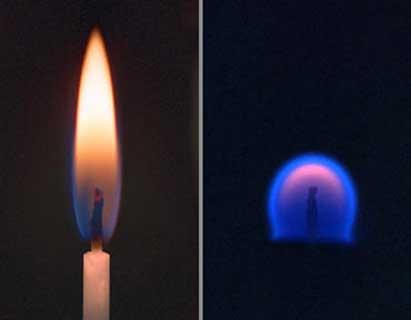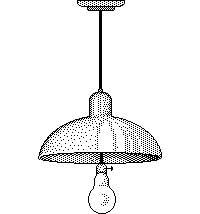Flame balls in space
2002/08/26 Elhuyar Zientzia

What form does fire adopt without gravity? In the photo on the left we have a candle exposed to gravity. To the right a candle in state of microgravity. The flame is very different. In conditions of microgravity the fire is round, hence the name of flame ball.
The shape of the flame of a lit candle on the ground is well known. It is a direct consequence of the action of gravity on fire: cold air enters under the flame and tends to rise when heated. The circulation of hot air gives shape to the flame. If there was no gravity, the hot air would not rise up.
In conditions of microgravity, on the contrary, the circulation of hot air or the turbulence of the air itself affects very little to the fire. The air does not circulate through the inside of the flame and the combustion occurs only in a very narrow layer and close to the surface. Therefore, the form of fire is permanent.
In addition, the flame is very small and barely illuminates. For comparative purposes, a birthday candle produces a thermal power of 50-100 watts, while a flame ball produces between 1 and 2 watts, which makes the fire much weaker.
And why study fire in microgravity? According to NASA scientists, microgravity is the best way to study inert combustion.

Gai honi buruzko eduki gehiago
Elhuyarrek garatutako teknologia





